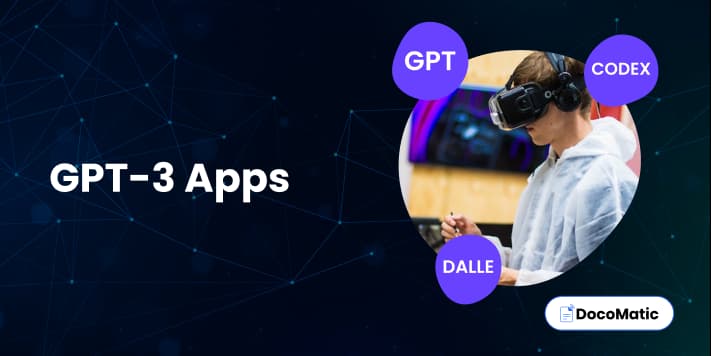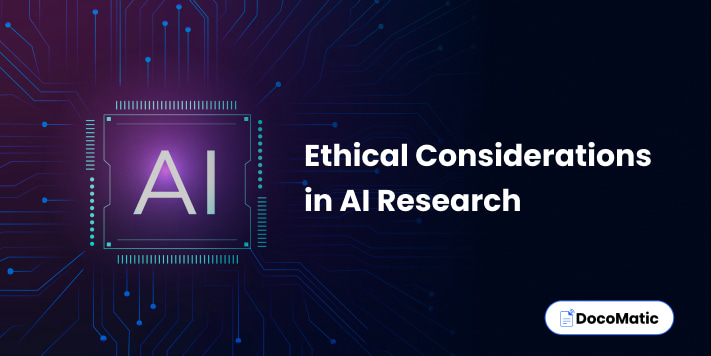OpenAI has been making waves since the launch of ChatGPT, a powerful language model. And why not? It is completely transforming the way we gather information and generate text.
Just ask anything to it and it will give you an “almost apt” reply. It is like Google talking to you personally to solve your search query.
But the exciting thing is that ChatGPT isn’t a lone child of OpenAI with no siblings. There are some other OpenAI language models as well which you were missing out on until now.
So in this post, we will introduce you to all of them but only after simplifying the meaning of language models and natural language processing for you.
Table of Content
What is a Language Model?
Ok, so enough of using the term “language model” without knowing the meaning of it. Let’s dissect it first into its basic parts – Language + Model.
Language: Do we really have to explain this?
Model: Take it as a computer program that learns from data and examples given to it so that it can make predictions or take decisions based on them.
Language model: It is an artificial intelligence system that can understand and generate a text based on a human language. It is trained with a large dataset which it then uses to produce an apt response to the input given to it.
For example, while using Gmail, you may have seen a grey text ahead of your cursor that suggests what you may be going to write. This is a language model at work.

So when you type “With all due,” the language model takes it as input and makes a prediction on what’s next based on its training data. Which, in this case, is “respect.”
This was just one example. But it can also be used for other natural language tasks such as:
- Speech recognition
- Machine translation
- Sentiment analysis
- Text generation
What is Natural Language Processing?
NLP or Natural Language Processing is a branch of AI and computer science that focuses on the interaction between us and computers with a human language.
This becomes possible by developing algorithms and computations and models that empower computers to understand, process, and generate text.
But the impending question that remains here is how is it advantageous to you? So these are some ways NLP can be beneficial:
- Sentiment analysis
It helps a computer detect the tone and sentiment of a person it is interacting with.
- Language translation
As the name suggests, with it, you can translate a text from one language to another.
- Named entity recognition
This enables a computer to categorize a list of text which, for example, may be mixed with entities like people, location, and organizations.
- Text summarization
This shortens a huge piece of text give you a gist of it so you don’t have to go through it word by word.
- Speech recognition
Apple Siri and Amazon Alexa understands your voice with speech recognition which converts a spoken language into text.
- Question answering
Language models like OpenAI GPT is used to answer questions asked to it based on the total data it has.
- Chatbots
Chatbots generate human-like text to have a conversation with us. It can be used for tasks such as resolving a customer’s queries.
Did you notice an overlap between the uses of NLP and a language model? That’s because…
Remember: NLP is a broad concept of which language models are a part.
Now that we have understood the basics, let us introduce you to the various language models of OpenAI.
OpenAI Language Models
As we said earlier that there are many language models created by OpenAI. Here are each of them:
1. GPT-3
You may have guessed from the name that GPT-3 isn’t the first of its kind. In fact, to your surprise, ChatGPT, GPT-2, and GPT-1 are the other members of the GPT series.
Yes, out of these, GPT-3 is the most sophisticated and capable of all. And even despite its imperfections, which may require you to learn how to use GPT-3 properly, it is a large language model that can:
- Generate code
- Generate text
- Translate text
- Answer question
- Summarize text
GPT-3 is further divided into language models whose names you may find familiar:
1. Davinci
Davinci is the most powerful of all 4 of these. This means that its capabilities exceed the rest and can perform a task with less instruction.
Thus, tasks that need the model to have a lot of understanding of the text, are best left to Davinci. Such tasks are summarizing text for a specific audience, creating creative content, etc.
However, its capabilities come at the expense of speed and money as they require more computational resources.
2. Curie
In terms of power, Curie only lags the Davinci. But it provides a great synergy of capacity and speed. Curie can perform nuanced tasks such as sentiment analysis and summarization.
And with its ability for answering questions, you can also use it as a general service chatbot.
3. Babbage
In the balance of speed and power, Babbage is placed third. Its capacity is lesser than Aurie, however, it is faster.
Thus, Babbage can be used to perform simple tasks like classification (or named entity recognition as discussed earlier).
4. Ada
Ada is a faster language model than the rest three. But it is also the least capable as it requires to provide more context to provide better responses.
It can be used for tasks like simple classification and parsing of text.
Pro tip: A powerful model is capable of doing what a faster model does. But a faster model is not reliable to perform tasks that require more power. So choose a language model based on the task at hand and the urgency to complete it.
| Model | Max request | Training data | Cost |
| Davinci | 4000 tokens | Up to Jun 2021 | $0.02 / 1k tokens |
| Curie | 2048 tokens | Up to Oct 2019 | $0.002 / 1k tokens |
| Babbage | 2048 tokens | Up to Oct 2019 | $0.0005 / 1k tokens |
| Ada | 2048 tokens | Up to Oct 2019 | $0.0004 / 1k tokens |
If you are wondering which one to pick for your task, then, as suggested by OpenAI, you can start with Davinci as it is the most powerful.
Once you get a hold of it, you can start experimenting with the others to see if you can perform your required work with them. This may help you save money while getting a faster service.
But if money and speed aren’t a problem, you can just stick to Davinci. Here is the full guide by OpenAI to get more help in choosing the right model.
2. Dall.E 2
Dall.E 2 is a neural network model that creates images from the given text. That means to create an image of “a cute puppy playing football”, all you need to do is type that text into Dall.E 2.
As a result, it will give you a variety of self-created images that describes your input.
It has 12 billion parameters (much lesser as compared to the 175 billion parameters of GPT-3). But don’t let that have any doubts about its capabilities in your mind.
It creates realistic images for a wide range of concepts. And to get a glimpse of it, check out the sample images created by Dall.E 2 along with the prompts used to create them.
The pricing of Dall.E 2 varies depending upon the resolution of the image you want to create:
| Resolution | Price |
| 1024×1024 | $0.020 / image |
| 512×512 | $0.018 / image |
| 256×256 | $0.016 / image |
3. Codex
Want to write a code by just describing the requirements of your project? Then Codex, another language model in the bag of OpenAI, is the one for you.
Codex processes your query and generates code. For it, it uses natural language processing and the billions of lines of public code from GitHub that has been fed to it as its training data.
With such a huge dataset, it won’t be a huge shocker to you that it can code well in over a dozen programming languages. These include Python (most proficient), JavaScript, Ruby, Go, Perl, PHP, Swift, TypeScript, SQL, and Shell.
Currently, Codex is in its beta version and thus, free to use. It offers two models, let’s have a look at them.
| Model | Description | Max request | Used for |
| Davinci | Most capable | 8000 tokens | Code completion and inserting completions within the code |
| Cushman | Almost as capable as Davinci but faster than that. | 2048 tokens | Real-time applications |
4. Content Filter and Moderation Endpoint
Content Filter is a part of GPT-3 API that helps it to detect text that may be sensitive or unsafe based on a predefined list of keywords and phrases.
Currently, it is set to be on the cautious side. Thus, it may make mistakes by falsely recognizing a text as fishy.
On the other hand, the Moderation Endpoint is a unique API endpoint created especially for content moderation. To find and eliminate offensive or sensitive content, it combines human review with machine learning models.
It is better suited for situations where high-quality moderation is required because it is more thorough and accurate than the Content Filter. In fact, even OpenAI, asks you to use Moderation Endpoint instead of the other.
Want to know more about OpenAI and its other creations? Then have a look at our post on “What is OpenAI?”
Now let’s look at what all these technologies hold in the future.
What is the Future of NLP?
NLP’s future is very promising and has enormous potential for a wide range of business applications across various industries. To give you an idea, here are some trends and developments that are likely to shape the future of NLP:
1. Multilingual NLP
Due to the increasing demand for global understanding and communication, multilingual NLP is becoming more and more crucial.
With multilingual NLP systems, businesses will be able to:
- Better serve international customers
- Ease cross-border communication
- Increase the reach of businesses
2. Explainable AI
Machine learning models should be more transparent and understandable, according to the explainable AI trend.
Explainable AI will help users better understand how NLP systems generate recommendations and decisions, fostering greater accountability and trust.
3. NLP in healthcare
By enabling a better understanding of medical records, enhancing clinical judgment, and facilitating patient communication, NLP has the potential to revolutionize healthcare.
More NLP applications in the healthcare sector are anticipated in the future, including virtual assistants for patient support and diagnosis.
4. Conversational AI
Conversational AI, which enables intuitive and natural human-to-machine communication, is developing and becoming more sophisticated.
It will likely be used more in the future in a variety of sectors, including customer service, education, and entertainment. In fact, it has already started to spread its magic.
FAQs
Some of the most sophisticated NLP models currently on the market are language models from OpenAI, like GPT-3. They can produce human-like responses to text prompts and are built to process large amounts of unstructured text.
They are renowned for their adaptability and capacity to carry out a variety of tasks, from content creation to language translation.
They are also used to analyze vast amounts of text data and make data-driven decisions in sectors like finance, healthcare, and education.
Conclusion
Are you also as excited about these AI developments as we are? Language models and Natural Language Processing have a lot of potential – of which we are just scratching the surface. And OpenAI is the pioneer currently for all these advancements.






